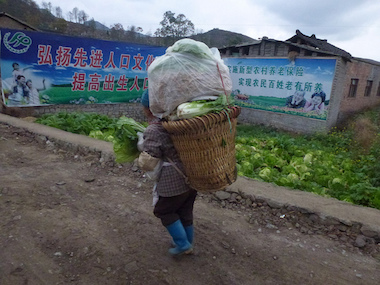There is currently heated debate about the implications of the ongoing slowdown in global growth. Lawrence Summers has revived the notion of “secular stagnation,” first introduced by Alvin Hansen in his 1938 Presidential Address to the American Economic Association (although Marxist economists have long been writing about the “crisis of realization” in capitalist economies). Paul Krugman has renewed focus on the concept of the “liquidity trap,” and Robert Gordon has written a fascinating book about the slowdown in technological progress in the United States. Even Foreign Affairs devoted its March-April 2016 issue to the topic of low global growth. Yet most of this work has focused on the US or the developed world, glossing over the majority of the world’s population. In my new IFPRI discussion paper, “The Future Ain’t What It Used to Be: Growth Models, Structural Change, and History,” I take a historically longer and geographically wider view of the current growth slowdown affecting the entire global economy, not just the industrialized world.
The topic of global economic slowdown is relevant for projections about poverty alleviation and food, energy, and climate conditions in the future, among other things. One conclusion of the paper, based on the analysis of the last two centuries of world growth, is that many projections suggest further acceleration of world economic growth at levels that do not seem to be in line with historical experience.
The history of global growth since the late 19th century shows that the world economy seems to go through periods of higher growth, usually associated with some global structural change, technological developments, and supportive world integration, followed by periods of lower growth, linked to the end of that structural change, technological slowdowns, and the emergence of global disruptions. Today’s changing growth trends suggest that the world may be moving into a phase of lower growth following the years of high growth since the early 1990s. This most recent growth period started with significant policy changes in several developing countries, including, but not exclusive to, China.
According to some calculations, those developments quadrupled the world’s effective labor supply in the 1990s. As a result, prices and wages remained low globally. This led to more expansionary monetary policies in developed countries (which reduced short-term interest rates). China’s growth contributed to the increase in commodity prices during the 2000s and helped generate current account surpluses in many developing countries (which then also contributed to low long-term interest rates). In a virtuous cycle, those low interest rates resulted in an expansion of global credit that sustained global growth and commodity prices. However, those expansionary monetary policies created bubbles in real estate and stock markets, which, when they unraveled, led to the global recession that began in 2007-2008.
Global growth since then has been supported mostly by unconventional monetary policies, such as the rapid expansion of money supply known as “quantitative easing,” some fiscal expansion, and the further accumulation of debt. However, all of these policies are only short-term options; none are sustainable in the long term.
The paper discusses several headwinds that will keep global economic growth low over the next couple of decades, including demographic trends, climate change, the growing need for public and private debt reduction, and non-supportive geopolitical developments. The question thus becomes what type of “deeper” growth narrative can counter those headwinds and support the expansion of the world economy in the future.I also briefly consider some options to try to reactivate the world economy, including structural policy changes and further expansion of unconventional monetary instruments. I argue that the growth-recovery process would be faster, more equitable, and more peaceful if these instruments allocate at least a portion of any increased money supply to investments in infrastructure, credit, and other productive activities for small producers, particularly in the agricultural sector, and to strengthening and expanding safety nets for poor and vulnerable populations. If completed, these unconventional monetary instruments can play an important role in achieving SDG1 (“End poverty in all its forms everywhere”) and SDG2 (“End hunger, achieve food security and improved nutrition and promote sustainable agriculture”) by 2030.
Note: this post has been updated.







